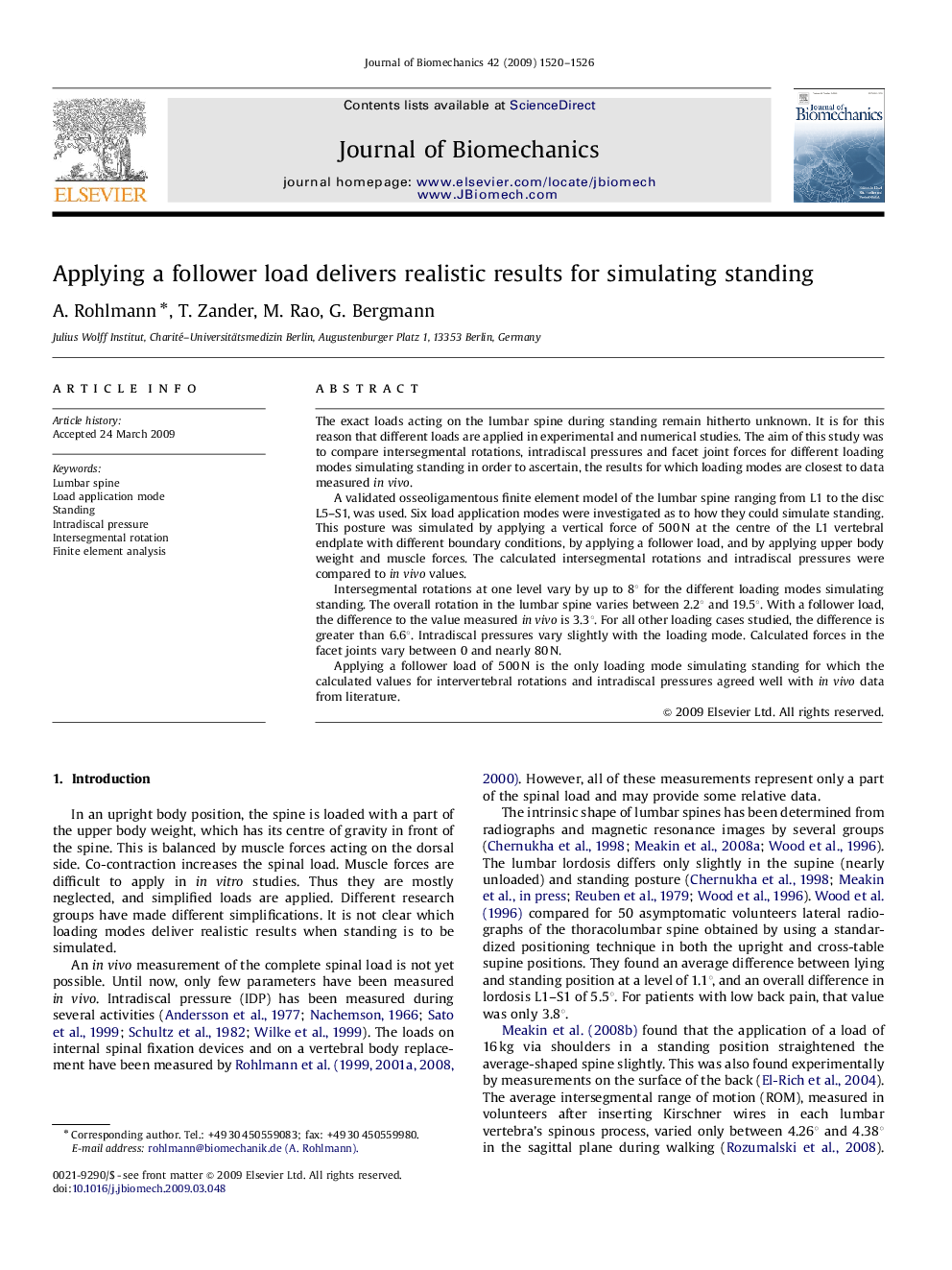| کد مقاله | کد نشریه | سال انتشار | مقاله انگلیسی | نسخه تمام متن |
|---|---|---|---|---|
| 872857 | 910284 | 2009 | 7 صفحه PDF | دانلود رایگان |

The exact loads acting on the lumbar spine during standing remain hitherto unknown. It is for this reason that different loads are applied in experimental and numerical studies. The aim of this study was to compare intersegmental rotations, intradiscal pressures and facet joint forces for different loading modes simulating standing in order to ascertain, the results for which loading modes are closest to data measured in vivo.A validated osseoligamentous finite element model of the lumbar spine ranging from L1 to the disc L5–S1, was used. Six load application modes were investigated as to how they could simulate standing. This posture was simulated by applying a vertical force of 500 N at the centre of the L1 vertebral endplate with different boundary conditions, by applying a follower load, and by applying upper body weight and muscle forces. The calculated intersegmental rotations and intradiscal pressures were compared to in vivo values.Intersegmental rotations at one level vary by up to 8° for the different loading modes simulating standing. The overall rotation in the lumbar spine varies between 2.2° and 19.5°. With a follower load, the difference to the value measured in vivo is 3.3°. For all other loading cases studied, the difference is greater than 6.6°. Intradiscal pressures vary slightly with the loading mode. Calculated forces in the facet joints vary between 0 and nearly 80 N.Applying a follower load of 500 N is the only loading mode simulating standing for which the calculated values for intervertebral rotations and intradiscal pressures agreed well with in vivo data from literature.
Journal: Journal of Biomechanics - Volume 42, Issue 10, 22 July 2009, Pages 1520–1526